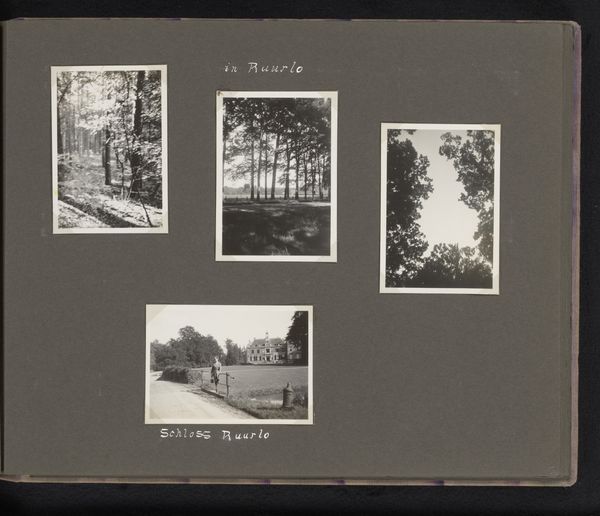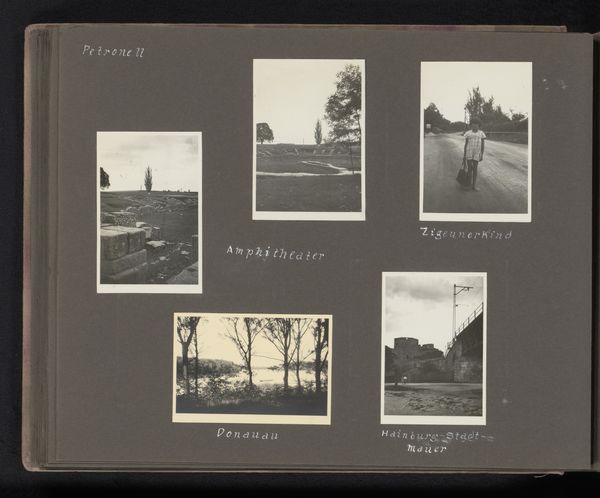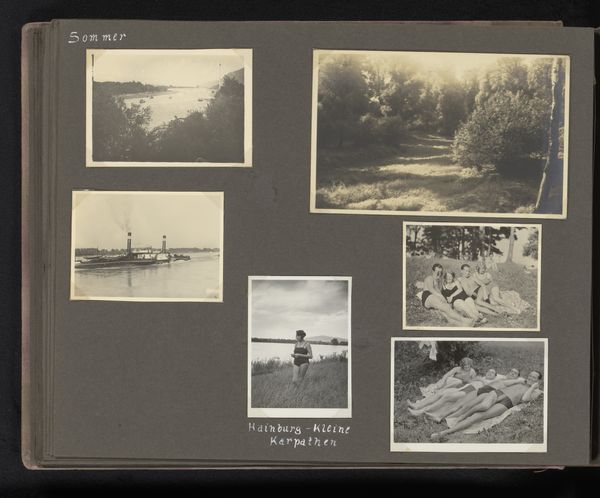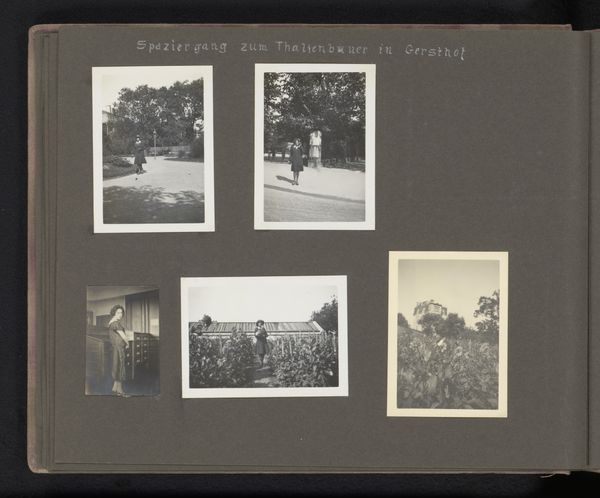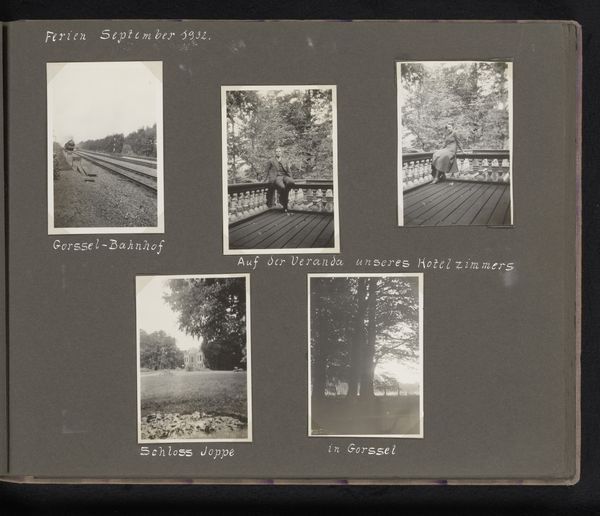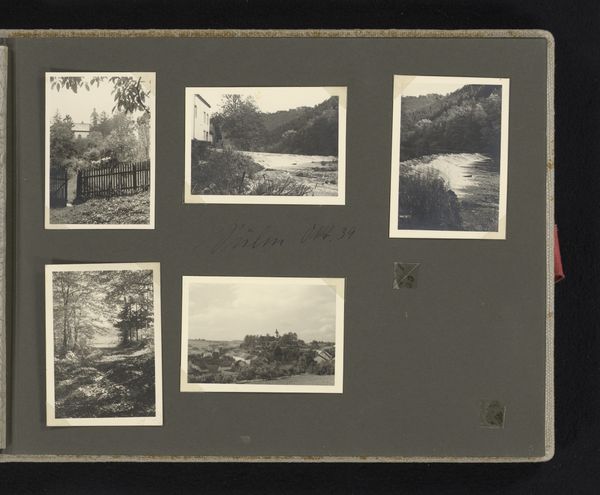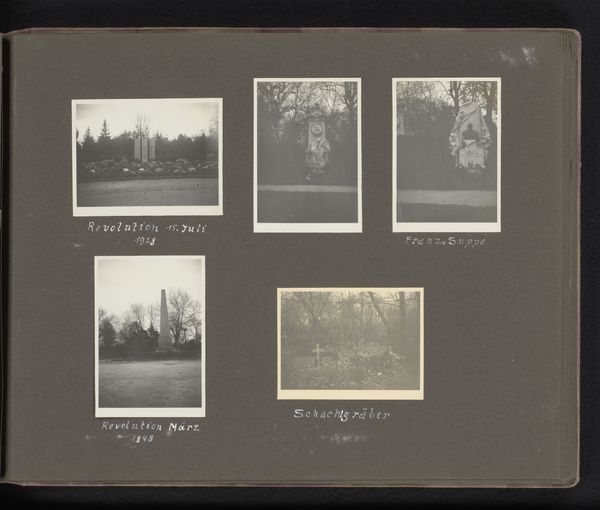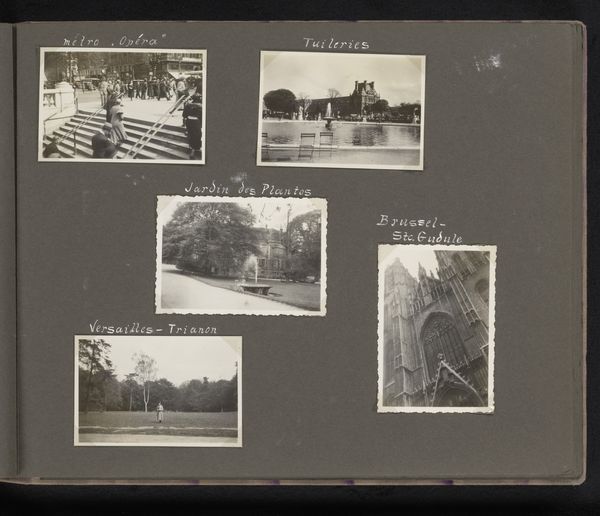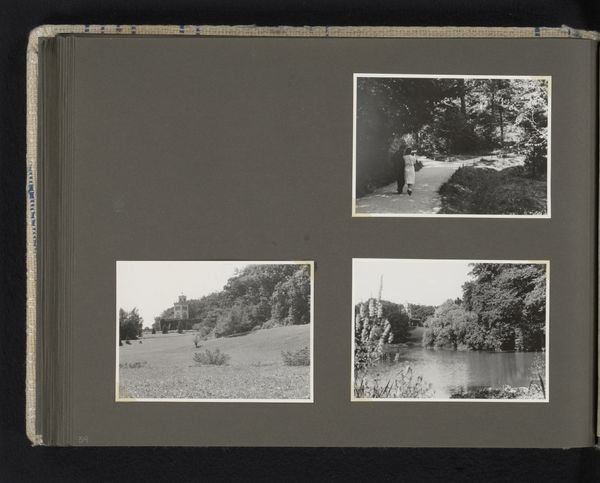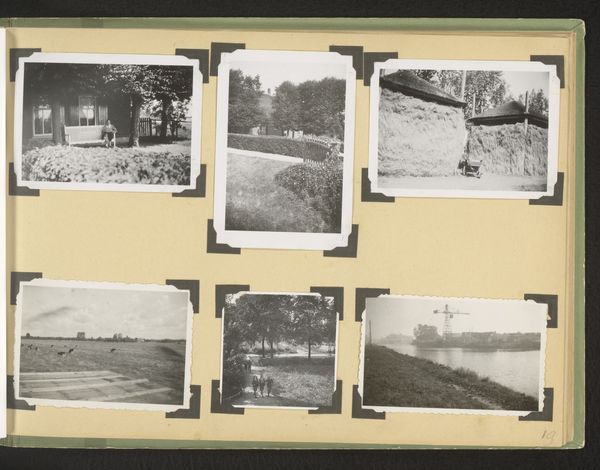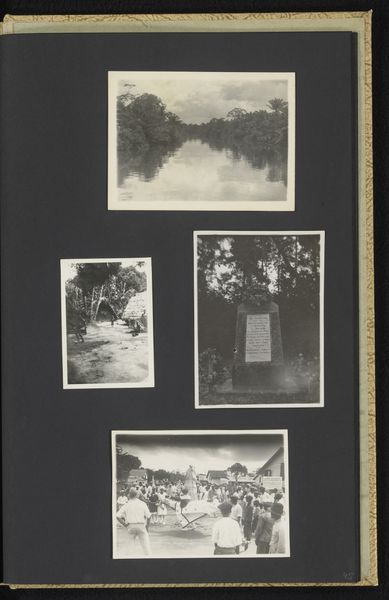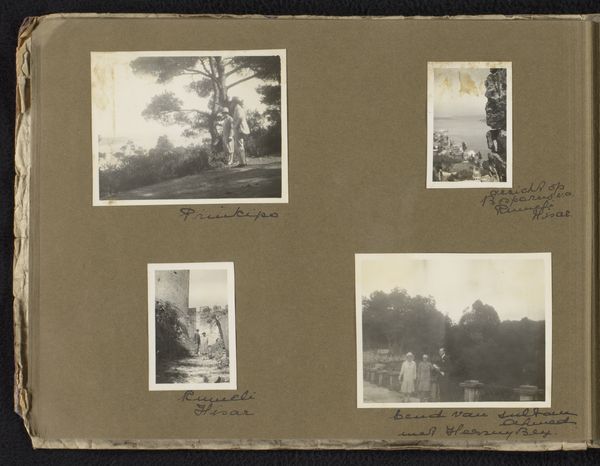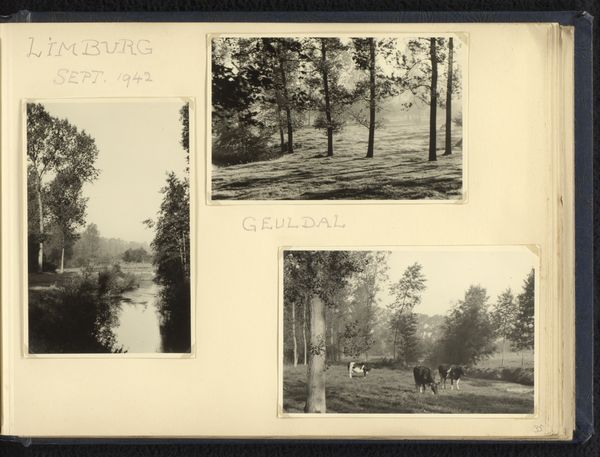
photography, gelatin-silver-print, albumen-print
#
historical design
#
landscape
#
photography
#
photojournalism
#
gelatin-silver-print
#
albumen-print
Dimensions: height 238 mm, width 290 mm
Copyright: Rijks Museum: Open Domain
Curator: This gelatin silver print is titled “Wiener Prater, Tierpark Hagenbeck en het Wienerwald,” or in English, “Viennese Prater, Hagenbeck Zoo and the Vienna Woods,” dating to around 1930 or 1931. It is part of a larger compilation created by Berti Hoppe. My first impression is melancholy and intimate. Editor: I’m immediately drawn to the way these snapshots, these modest gelatin silver prints, are compiled on a single page. It is giving me a documentary, historical vibe and suggests a fascinating story. I wonder about Hoppe’s choice of materials: the specific type of paper, the development process... All that contributes to the object's aura. Curator: The way the images are arranged on the page provides a specific, meaningful contrast of themes. We see a progression through leisure. There is Hagenbeck with the elephants which contrasts greatly with nature imagery, trees, a stairway and what appears to be cherry blossoms. The images carry symbolic value—nature represents freedom, innocence and a deeper sense of national pride. Editor: I'm interested in Hagenbeck. That’s very likely reflecting early twentieth-century labor practices related to tourism. These photographs were likely quite accessible and intended for the common person. That idea really gets me thinking about how photography served a democratic purpose back then, even shaping the landscape of leisure and what types of tourism became desirable. The material is, therefore, linked to class and accessibility. Curator: Definitely, the symbolism blends social commentary and an aspirational vision of what a day out might look like during this era. The very arrangement here tells its own story. You have the structured and the wild represented together. It creates a tension, a visual narrative, if you will, regarding nature, human interaction, and cultural norms during this period. Editor: Right! Hoppe likely had complete creative and technical control over how the scenes came to life and how their final compilation would circulate. Curator: And understanding what these places and items symbolize gives us access into that period, its beliefs, and what folks idealized, as well as the potential societal pressures within those ideals. The image feels so much bigger now that we unpacked it together. Editor: Absolutely, looking at the materiality and labor, we appreciate the history embedded in its making and purpose. Fascinating!
Comments
No comments
Be the first to comment and join the conversation on the ultimate creative platform.
